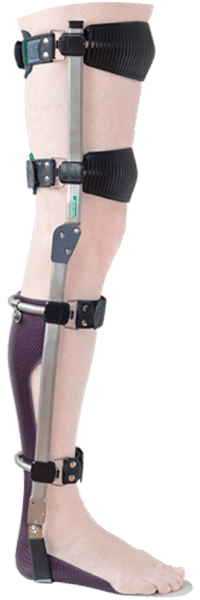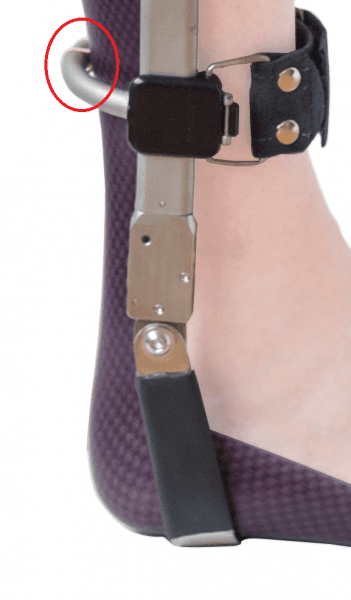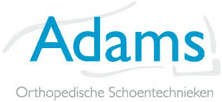The UTX ESC is a lightweight long leg brace (also called KAFO, orthosis, or splint). The UTX-ESC is an UTX-SWING integrated with an Ankle Foot Orthosis (AFO). The clever connection of the AFO to the UTX enables both the SWING function and optimal support of the ankle. Even with a somewhat stiffer AFO, the dynamic connection between the AFO and UTX provides just the amount of movement that is needed to make the UTX single hinge work in unlocking the UTX.
Thus, the UTX SWING can also be used if you just need some more control over the ankle foot region. For example, if a light spasm causes too much plantar flexion while for the use of the SWING at the end of the stand phase would require proper dorsi flexion (click for details on the UTX SWING operation here).
For UTX STABIL and UTX FREE version there is an option without an ankle hinge: UTX-ESF. There is after all no connection needed between the ankle and knee, so the AFO can handle the stability around the ankle and the UTX does the rest.

























